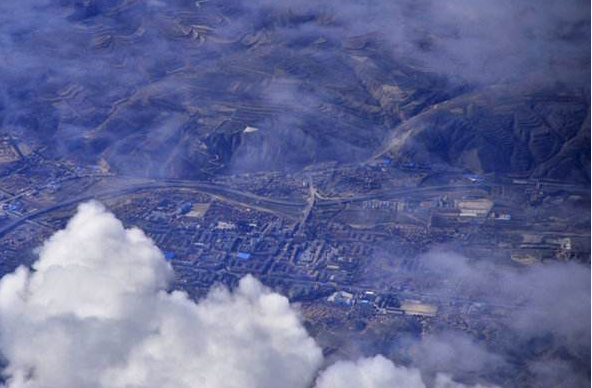(单词翻译:单击)
People who habitually live at altitude have often spent thousands of years developing disproportionately large chests and lungs, increasing their density of oxygen-bearing red blood cells by almost a third, though there are limits to how much thickening with red cells the blood supply can stand. Moreover, above 5,500 meters even the most well-adapted women cannot provide a growing fetus with enough oxygen to bring it to its full term.
生活在高处的人往往要经过几千年才渐渐拥有特别大的胸腔和肺部,使携带氧气的红细胞浓度增加差不多三分之一。可是,血浓所能承受的红细腹浓度是有限度的,要是浓度太大,血液流动就无法顺畅。而且,在5500米以上的高度,连已经完全适应的妇女也无法为发育中的胎儿提供足够的氧气,不到足月就会把他(她)生下来。
In the 1780s when people began to make experimental balloon ascents in Europe, something that surprised them was how chilly it got as they rose. The temperature drops about 3 degrees Fahrenheit with every thousand feet you climb. Logic would seem to indicate that the closer you get to a source of heat, the warmer you would feel. Part of the explanation is that you are not really getting nearer the Sun in any meaningful sense. The Sun is ninety-three million miles away. To move a couple of thousand feet closer to it is like taking one step closer to a bushfire in Australia when you are standing in Ohio, and expecting to smell smoke. The answer again takes us back to the question of the density of molecules in the atmosphere. Sunlight energizes atoms. It increases the rate at which they jiggle and jounce, and in their enlivened state they crash into one another, releasing heat. When you feel the sun warm on your back on a summer's day, it's really excited atoms you feel. The higher you climb, the fewer molecules there are, and so the fewer collisions between them.
18世纪80年代,欧洲有人开始乘气球做攀升试验。他们吃惊地发现,他们升得越高,上面的温度越低。每爬高1000米,温度下降大约1.6摄氏度。从逻辑上说,离热热源越近,似乎应当越觉得暖和。部分解释是,你其实并没有接近太阳多少。太阳在1.5亿公里以外。朝它移近几百米,就如站在俄亥俄州,朝澳大利亚的丛林大火走近一步,指望闻到烟味。若要回答这个问题,我们又得回到大气里分子密度的问题。阳光激活原子,它增加了原子的运动速度;原子在激活的状态之下互相撞击,释放热量。夏日里背上感到太阳是暖烘烘的,你感到的其实是阳光在激活原子。你爬得越高,那里的原子越少,因此它们的撞击次数就越少。


